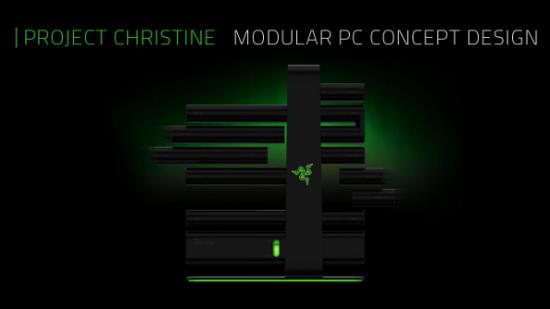One of the most intriguing things to come out of CES 2014, back in January, was Razer’s Project Christine. A modular PC concept with mineral oil cooling where you could easily slot in or remove the GPU, SSD or any other piece of hardware sounded like a dream for those who – like me – prefer not to faff around with the insides of their rig all the time, but still want to upgrade.
One of my concerns was the cost of buying the all the modules every time you wanted to upgrade, but Razer was also contemplating a subscription service, where you’d pay by the month and always have a state of the art setup. Unfortunately, the prototype may be destined to remain merely a concept, as PC manufacturers are, according to Razer CEO Min-Liang Tan, too risk averse.
“We’re trying to talk to some of the other PC manufacturers about it because I think the difference for us is that we are really focused on our user, right,” Tan said in an interview with Polygon. “We’ve been trying to speak to other OEMs and I think the response has been generally, ‘OK, what’s the forecast for this? How many units are you going to ship? What are the margins?’ and stuff like that where we’re being very open with them to say, ‘Look, we don’t know.'”
The same thing happened with Razer’s Blade laptop, but Razer just went ahead and manufactured the laptop itself, without partnering with an OEM, and it paid off. Unfortunately, Project Christine won’t see a repeat of this.
“Christine’s a bit different because if we went out and built our own modules and platform, we would literally be creating a walled garden, which is something that we don’t want to do,” Tam said. “We want to be able to go out there with a couple of big OEMs and be able to say, look, maybe Razer does all the super high-end stuff. You guys can do all the mass-market stuff and stuff like that.”
As Tam sees it, there’s a fundamental difference in Razer’s approach with Project Christine and what OEMs want out of it. The manufacturers care about the bottom line, their business is making profit – reasonably – while Razer wants to take a risk on something new and be at the start of it.
“The problem is the PC market, at this point of time, just doesn’t reward innovation. It rewards commoditization. It rewards mediocre, shitty project because it’s become this vicious cycle of sorts. Anyone who tries to innovate, like for Christine, everybody wants it, but they all want it to be immediately at commodity pricing. And that’s the thing, we’re trying to encourage the rest of the OEMs, and we’re literally telling them, ‘Look, we’re not going to make a cent out of this. We just want to be part of an ecosystem; we’re happy to open this up to everyone to do that.'”
Tam and Razer just want to get it out there. They are even willing to share design schematics with third parties at no cost. Like the design itself, Tam seems to be taking an open approach. He wants to kick off big changes in the PC landscape.
But it might never happen, and that would be a bloody shame.
Cheers, Polygon.
